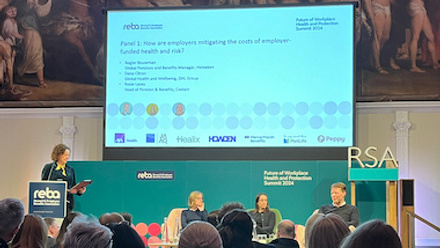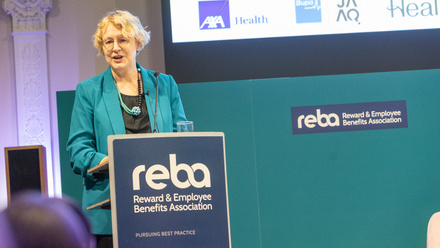Why those with group risk benefits in place will be ahead of the curve on the Government's plans

With all the changes we’ve seen at the helm of the DWP in recent years (five different ministers since 2015) “ a week is a long time in politics”, to coin a phrase. However, regardless of the changing face at the helm, the Government’s flagship ambitions for health and work are still full steam ahead, as outlined in the Government’s Improving Lives: The Future of Work, Health and Disability roadmap, Good Work: the Taylor review of modern working practices and Thriving at work: the Stevenson/Farmer review of mental health and employers.
1 million more disabled people in work
The Government’s commitment to seeing one million more disabled people in work over the next ten years (according to Improving Lives: The Future of Work, Health and Disability November 2017) is not only focused on moving disabled people into work but also heavily relies on keeping people in work, and stemming the 10% flow of disabled people who move out of work in a year.
There is a huge role for employers to play in achieving this and a benefit to their business by proactively managing ill-health and chronic conditions and retaining people with disabilities and long-term health conditions in the workplace.
This is particularly important with regards to supporting mental health in the workplace, given that 49% of the current 2.4 million Employment & Support Allowance claimants have a mental health condition as their primary condition (according to Department for Work and Pensions, Employment and support Allowance Caseload, February 2017).
This is also very much reflected in the work the group risk protection sector undertakes as an industry where we have consistently seen mental illness as a top cause of claim under group income protection policies in recent years, on or near a par with cancer (GRiD Claims Surveys 2014 to 2017).
Onus of responsibility rests with employers
The Stevenson/Farmer review recognises the role employers can play in creating "good work" and achieving the vision that the UK should be one of the leading nations for mental health awareness and support. The cost to employers outlined in the review (between £33 billion and £42 billion a year) should be a sufficient driver for change alone. So now is the time to start looking at current provision/support in place and considering what more can be done to meet the mental health core or enhanced standards set out in the review.
Employers will find that using the various support services made available alongside group risk products (life assurance, income protection and critical illness protection benefits provided to employees through the workplace by their employers) is a good starting point since many are aimed at supporting mental health and helping those with mental health conditions stay in or get back to work.
Positive impact of early intervention
The group risk industry has long recognised the positive impact of early interventions. That’s why group income protection in particular has evolved away from a purely financial product to one that includes support services that help employers by complementing health, attendance and wellbeing programmes.
Of the 2,289 people helped back to work by the industry during 2016 through an active early intervention, 54% had help to overcome mental illness, according to GRiD Claims Survey 2017.
Support available for employers
Not only that, but, for employers and line managers, group risk support can include HR and employment law advice, absence management and vocational rehabilitation services, help with difficult situations, mediation and more.
However, GRiD’s latest employer research, Group Risk Development (GRiD) 2017 Employer Research, found that only 32% of employers say they make regular use of all the extra support within group risk products.
Others admitted to only using some of the support available, or using it fairly irregularly. More than one in ten organisations either did not use any of the additional support available via group risk products, or were completely unaware that any support existed at all.
The support available via group risk products is wide ranging, from employee assistance programmes and fast-track access to counselling through to support for staff affected by a colleague’s stress. It can also include mental health first-aid training for managers to spot the signs of mental ill health and stress so they can be more effective in signposting staff to help. Additionally, preventative care is available such as giving access to GP services and health tracking apps.
No extra charge for support
This support, both pre-emptive and responsive, is available at no extra charge and can be used every day – by employers, line managers and employees alike - even if a claim is never made.
This is especially pertinent given the recent demise of the Government’s flagship Fit for Work Service, which has been diluted from a service aimed at giving employers (especially SMEs) much needed access to occupational health assessments, to online and phone services offering general health and work advice only.
So, while a lot will be required from employers to help achieve the Government’s ambitious visions for achieving a healthy and inclusive workplace, those with group risk benefits will find that they are better able to do this. Those that don’t would be wise to look at how group risk can help them sooner rather than later.
Katharine Moxham is spokesperson for Group Risk Development (GRiD)
This article was supplied by GRiD.






